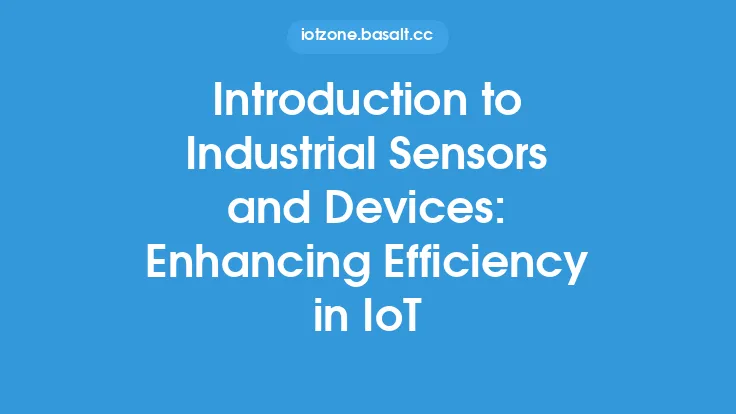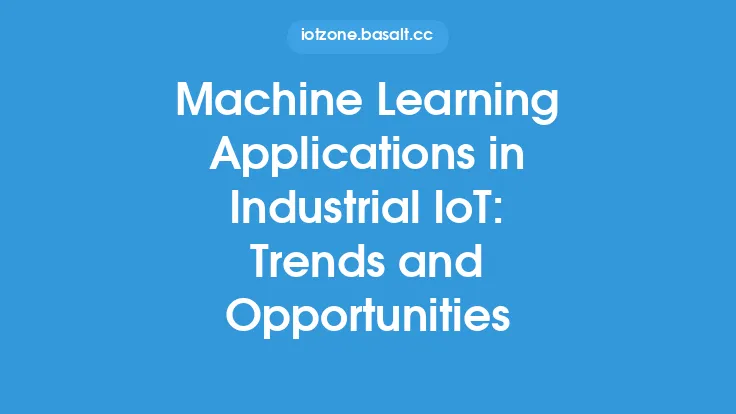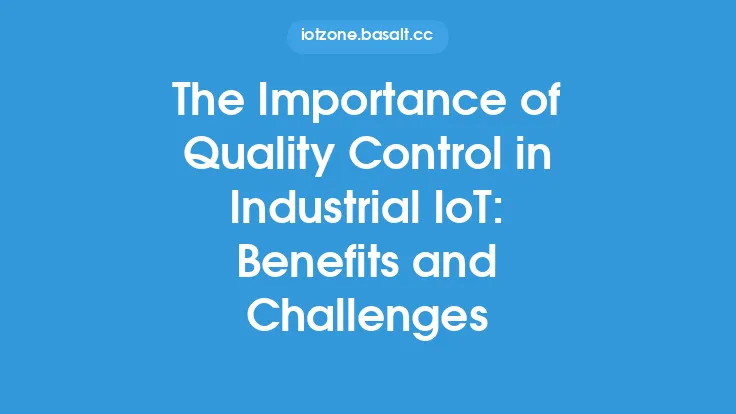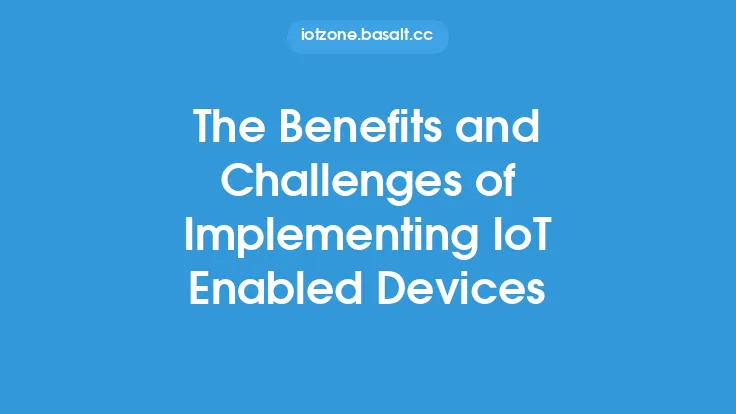The increasing demand for efficient and automated industrial processes has led to the widespread adoption of Industrial Internet of Things (IIoT) technologies. At the heart of these systems are industrial devices, which play a crucial role in collecting and transmitting data, controlling equipment, and optimizing operations. In this article, we will delve into the applications and benefits of industrial devices in IoT, exploring their role in transforming industries and improving productivity.
Applications of Industrial Devices in IoT
Industrial devices in IoT have a wide range of applications across various industries, including manufacturing, oil and gas, transportation, and healthcare. Some of the most common applications include:
- Predictive maintenance: Industrial devices can monitor equipment condition and performance in real-time, enabling predictive maintenance and reducing downtime.
- Quality control: Devices such as sensors and cameras can monitor production lines, detecting defects and anomalies, and enabling real-time quality control.
- Inventory management: Industrial devices can track inventory levels, monitor supply chains, and optimize logistics, reducing costs and improving efficiency.
- Energy management: Devices such as smart meters and energy sensors can monitor energy consumption, enabling industries to optimize energy usage and reduce waste.
- Remote monitoring: Industrial devices can enable remote monitoring of equipment and processes, allowing industries to respond quickly to issues and improve overall productivity.
Benefits of Industrial Devices in IoT
The benefits of industrial devices in IoT are numerous and well-documented. Some of the most significant advantages include:
- Improved efficiency: Industrial devices can automate many industrial processes, reducing manual labor and improving productivity.
- Increased accuracy: Devices such as sensors and scanners can provide accurate and reliable data, reducing errors and improving quality control.
- Enhanced safety: Industrial devices can monitor equipment and processes in real-time, enabling industries to respond quickly to safety issues and prevent accidents.
- Reduced costs: Industrial devices can help industries reduce energy consumption, minimize waste, and optimize resources, leading to significant cost savings.
- Improved decision-making: Industrial devices can provide real-time data and insights, enabling industries to make informed decisions and drive business growth.
Types of Industrial Devices Used in IoT
There are many types of industrial devices used in IoT, each with its own unique characteristics and applications. Some of the most common devices include:
- Sensors: Temperature, pressure, vibration, and level sensors are used to monitor equipment and processes in real-time.
- Actuators: Devices such as valves, pumps, and motors are used to control equipment and processes, enabling automation and optimization.
- Controllers: Programmable logic controllers (PLCs), supervisory control and data acquisition (SCADA) systems, and distributed control systems (DCS) are used to control and monitor industrial processes.
- Industrial PCs: Ruggedized computers are used to collect and analyze data, enabling real-time monitoring and control of industrial processes.
- Communication devices: Devices such as routers, switches, and gateways are used to enable communication between industrial devices and the cloud or other systems.
Communication Protocols Used in Industrial IoT
Industrial devices in IoT use a variety of communication protocols to enable data transmission and communication. Some of the most common protocols include:
- MQTT: A lightweight messaging protocol used for machine-to-machine communication.
- CoAP: A protocol used for constrained networks and devices, enabling efficient communication and data transmission.
- HTTP: A protocol used for web-based communication, enabling industrial devices to communicate with the cloud and other systems.
- OPC-UA: A protocol used for industrial automation, enabling secure and reliable communication between devices and systems.
- Modbus: A protocol used for industrial control systems, enabling communication between devices and controllers.
Security Considerations for Industrial Devices in IoT
Industrial devices in IoT are vulnerable to cyber threats and security breaches, which can have significant consequences for industries and businesses. Some of the most common security threats include:
- Unauthorized access: Hackers can gain access to industrial devices and systems, enabling them to disrupt operations and steal sensitive data.
- Data breaches: Industrial devices can be compromised, enabling hackers to steal sensitive data and disrupt operations.
- Malware: Industrial devices can be infected with malware, enabling hackers to disrupt operations and steal sensitive data.
- Denial of service: Hackers can launch denial of service attacks, overwhelming industrial devices and systems, and disrupting operations.
Best Practices for Implementing Industrial Devices in IoT
To ensure successful implementation of industrial devices in IoT, industries and businesses should follow best practices such as:
- Conducting thorough risk assessments and security audits to identify vulnerabilities and threats.
- Implementing robust security measures, such as encryption, firewalls, and access controls.
- Ensuring device and system compatibility, to enable seamless communication and data transmission.
- Providing training and support, to ensure that personnel are equipped to use and maintain industrial devices and systems.
- Continuously monitoring and updating industrial devices and systems, to ensure that they remain secure and efficient.
Conclusion
Industrial devices in IoT have the potential to transform industries and improve productivity, enabling automation, optimization, and real-time monitoring and control. By understanding the applications, benefits, and types of industrial devices used in IoT, industries and businesses can make informed decisions and drive business growth. However, it is also important to consider security threats and vulnerabilities, and to follow best practices for implementation and maintenance. As the IIoT continues to evolve and grow, it is likely that we will see even more innovative applications and benefits of industrial devices in IoT.





